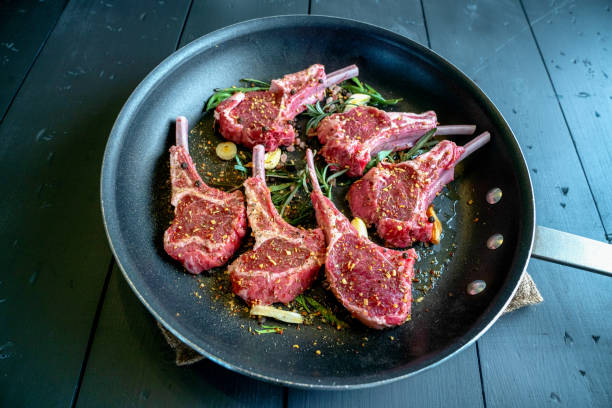Mutton, the meat of adult sheep, is a rich and flavorful source of protein that has been enjoyed by people around the world for thousands of years. But while mutton may be a tasty treat, it is also relatively high in calories, making it an important food to consider when trying to maintain a healthy diet. In this article, we’ll take a closer look at the calorie content of mutton and explore some of the other nutritional information that you need to know about this popular meat.
First, let’s talk about the calorie content of mutton. According to the United States Department of Agriculture (USDA), a 3-ounce serving of cooked, lean mutton contains approximately 215 calories. This is slightly more than the same serving size of beef, which contains around 200 calories, but less than the same serving of pork, which contains about 230 calories. However, it’s worth noting that the calorie content of mutton can vary depending on the cut of meat and the cooking method used. For example, mutton that is cooked with the fat still on it will be higher in calories than lean cuts of mutton.
In addition to the calorie content of mutton, it’s also important to consider the other nutritional information that this meat provides. Mutton is a good source of protein, providing around 25 grams of protein per 3-ounce serving. It’s also a good source of iron and zinc, both of which are essential minerals that are important for maintaining good health. Mutton also contains B vitamins, which are important for energy metabolism, and vitamin B12, which is essential for maintaining healthy red blood cells.
It’s important to note that the calorie content of mutton can vary depending on the cut and how it is prepared. For example, a 3-ounce serving of cooked leg of mutton contains approximately 215 calories, while a 3-ounce serving of cooked rib of mutton contains approximately 257 calories. Additionally, the calorie content will increase if the mutton is cooked in oil or butter, or if it is served with a high-calorie sauce.
Despite its relatively high calorie content, mutton can still be a part of a healthy diet. The key is to balance it with other nutrient-dense foods and to practice portion control. For example, instead of serving a large portion of mutton as the main course, try incorporating it into a dish with a variety of vegetables to increase the overall nutrient content. Additionally, consider cooking methods that do not add extra calories, such as grilling or roasting.
Another way to reduce the calorie content of mutton is to trim away any visible fat before cooking. Mutton tends to have a higher fat content than other types of meat, so removing as much fat as possible can help to lower the calorie content. Additionally, choose lean cuts of mutton, such as the leg or loin, which have less fat than other cuts.
In addition to its calorie content, mutton is also a good source of several important nutrients. For example, a 3-ounce serving of cooked mutton contains approximately:
26 grams of protein
9 grams of fat
0 grams of carbohydrates
Mutton is also a good source of several vitamins and minerals, including zinc, iron, and vitamin B12. These nutrients are essential for maintaining good health and can help to support a variety of bodily functions.
In conclusion, mutton is a flavorful and versatile ingredient that can be a part of a healthy diet. However, due to its relatively high calorie content, it’s important to practice portion control and to balance it with other nutrient-dense foods. Additionally, choose lean cuts of mutton and trim away any visible fat before cooking to reduce the calorie content. When consumed in moderation and in combination with other healthy foods, mutton can be a delicious and nutritious addition to any meal.

 Home
Home Health
Health Diet & Nutrition
Diet & Nutrition Living Well
Living Well More
More












